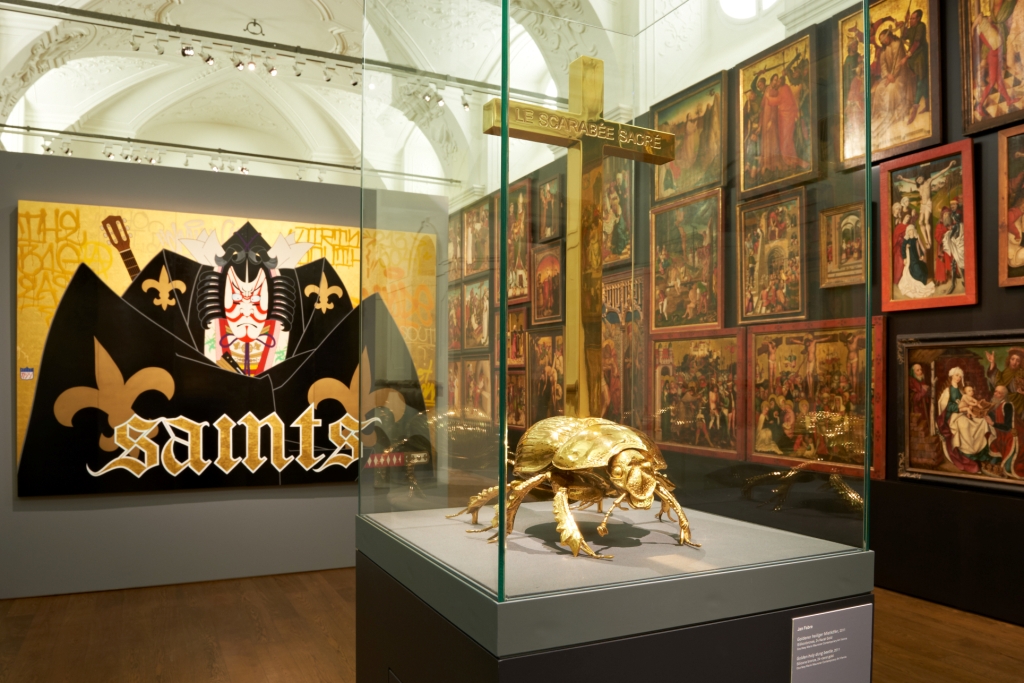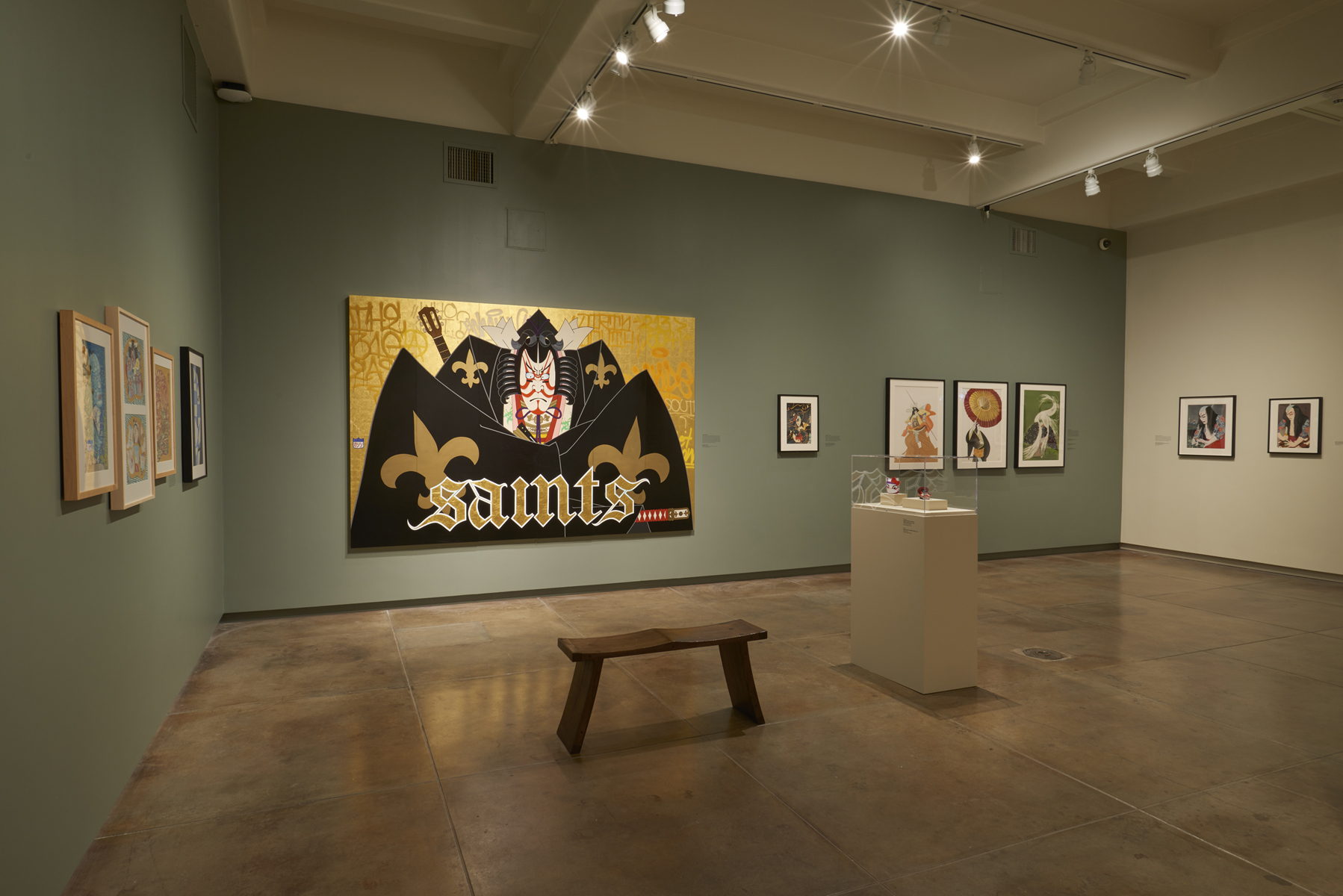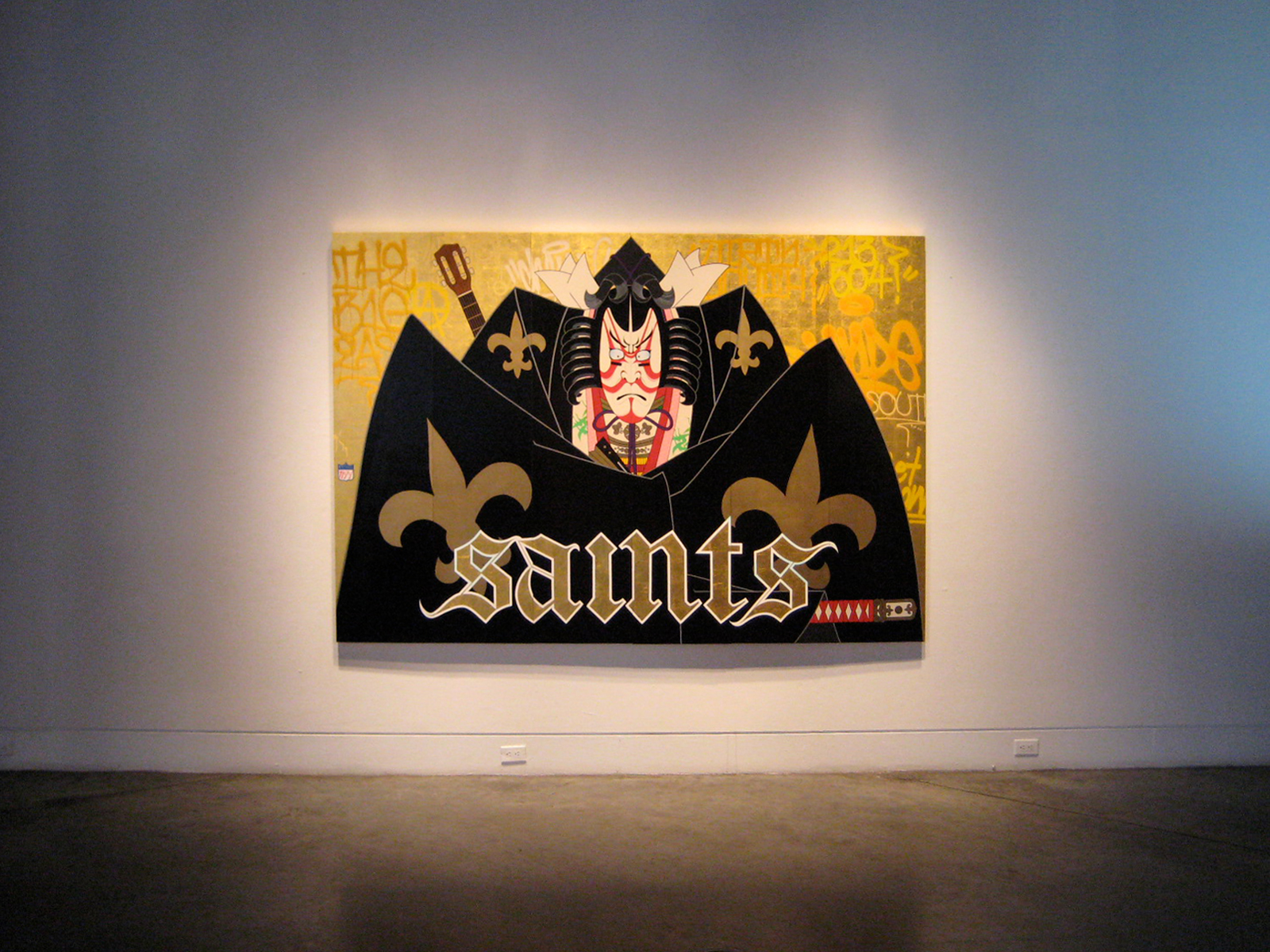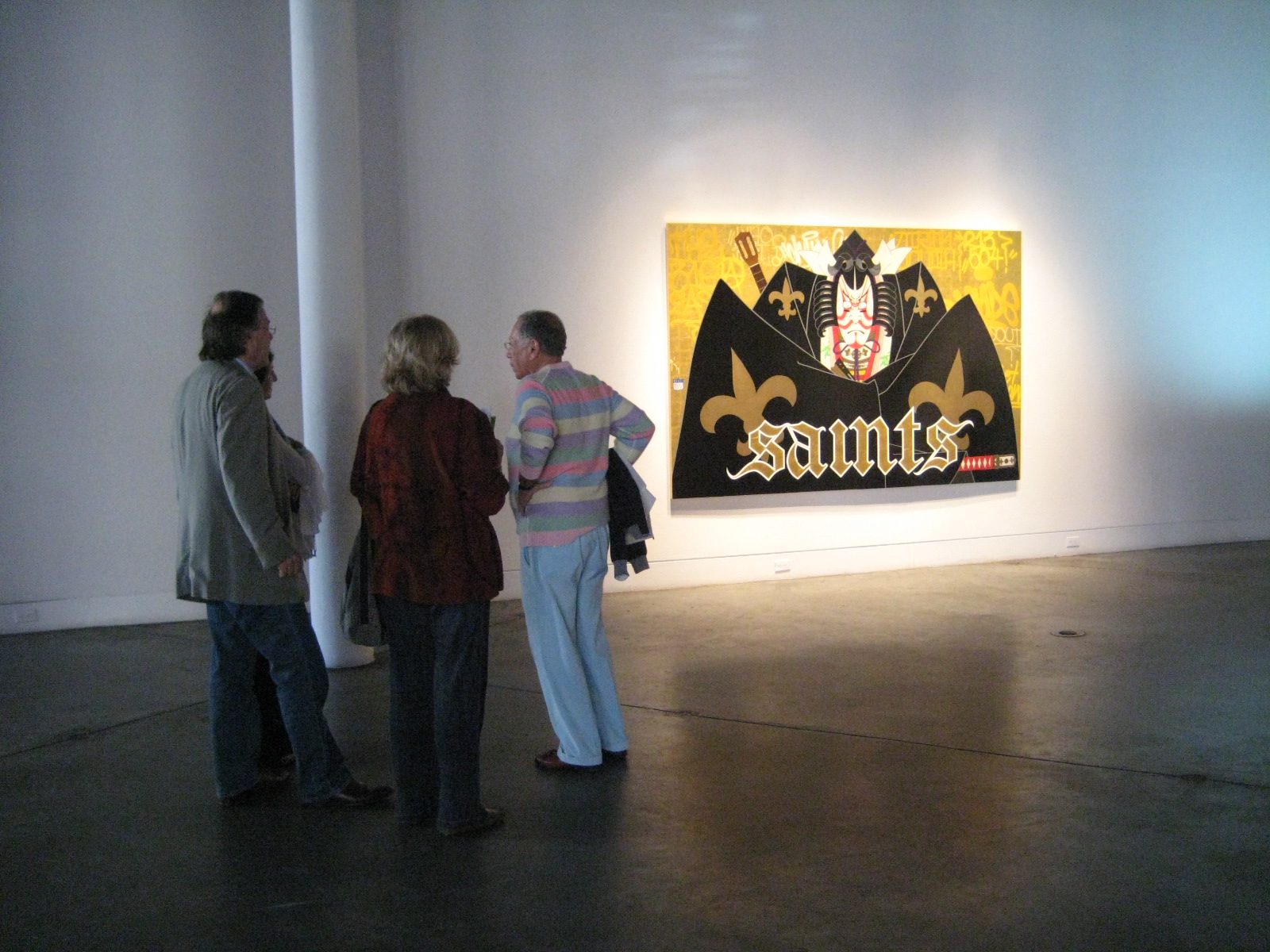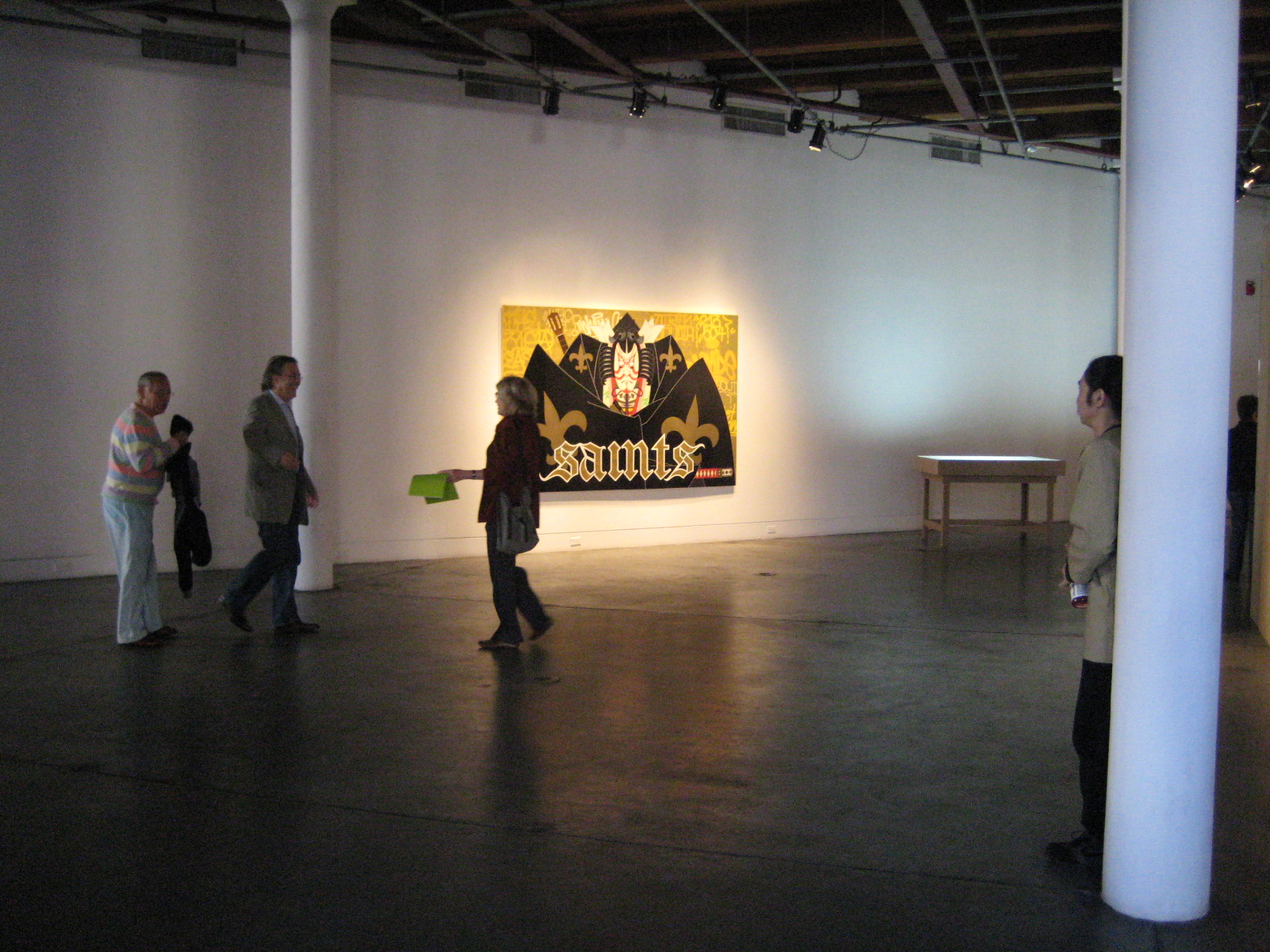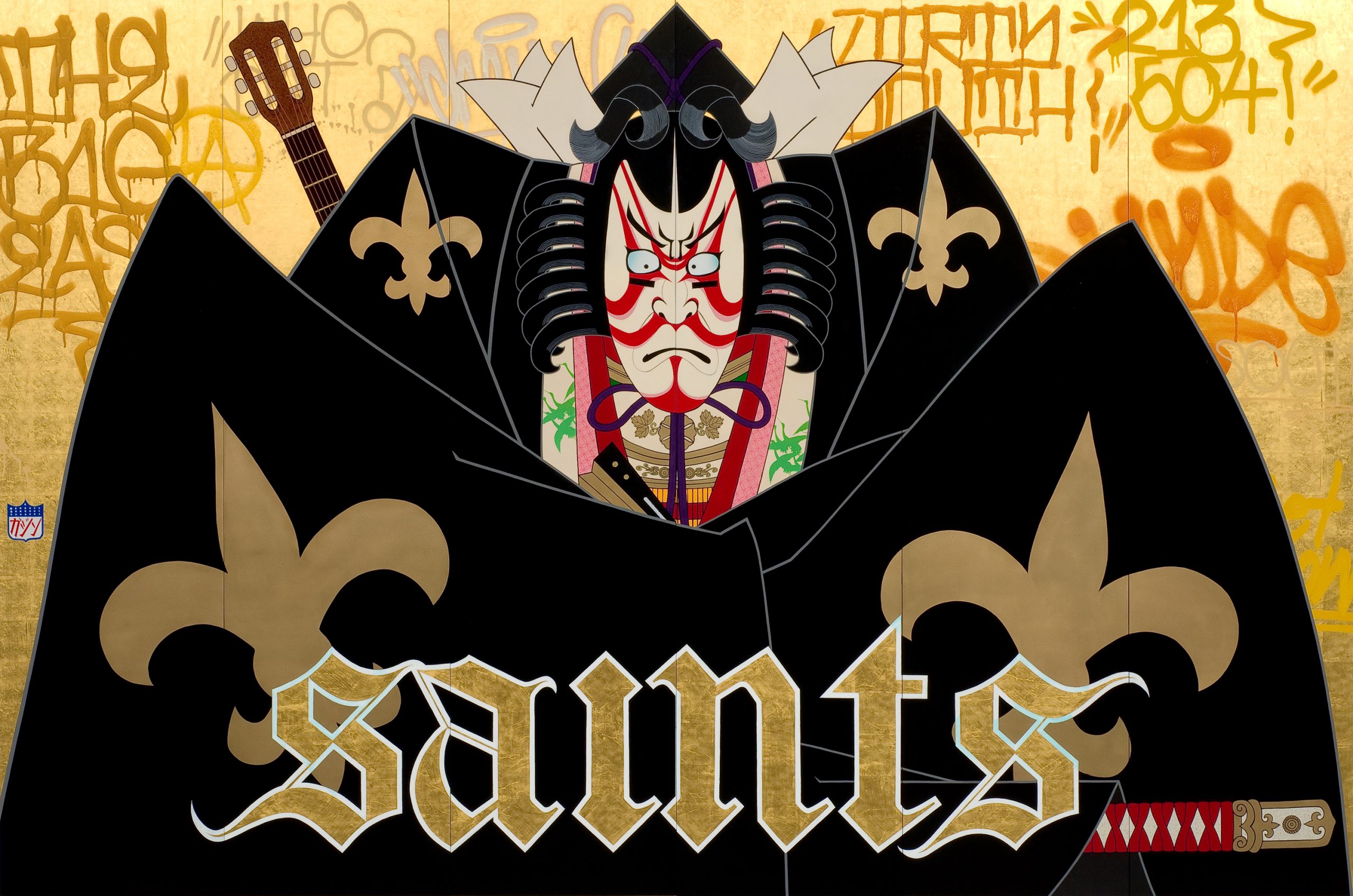
Gajin Fujita’s unique practice brings together wildly diverse styles, cultures, and time periods in riotous compositions that proudly affirm the artist’s Los Angeles roots. Blending West Coast graffiti styling with Edo-period Japanese aesthetics, Fujita’s work simultaneously tells two sides of his own story: a teenage tagger from Boyle Heights associated with the KGB and KIIS crews; and the son of Japanese immigrants, both artists, who was introduced to traditional Japanese art and craft at an early age.


Gajin Fujita
The Saints (right side shows the back of the work), 2008
gold leaf, acrylic, spray paint, and paint marker on wood panel
72 x 108 in. (182.9 x 274.3 cm) - 6 panels
$175,000
Inquire
Fujita’s core medium is spray paint. He uses intricate stencils to achieve complex compositions on panel; these stencils, flush with overspray and heavy with sketches and personal notes, are affixed to a paper support and signed with the artist's unique chop mark in traditional red ink. The intimate relationship between painting and study can be seen in two drawings from No Man’s Land, above. The paper stencils retain ghost images of what appears in the painting; they are elegant, spare negatives of the painted image.
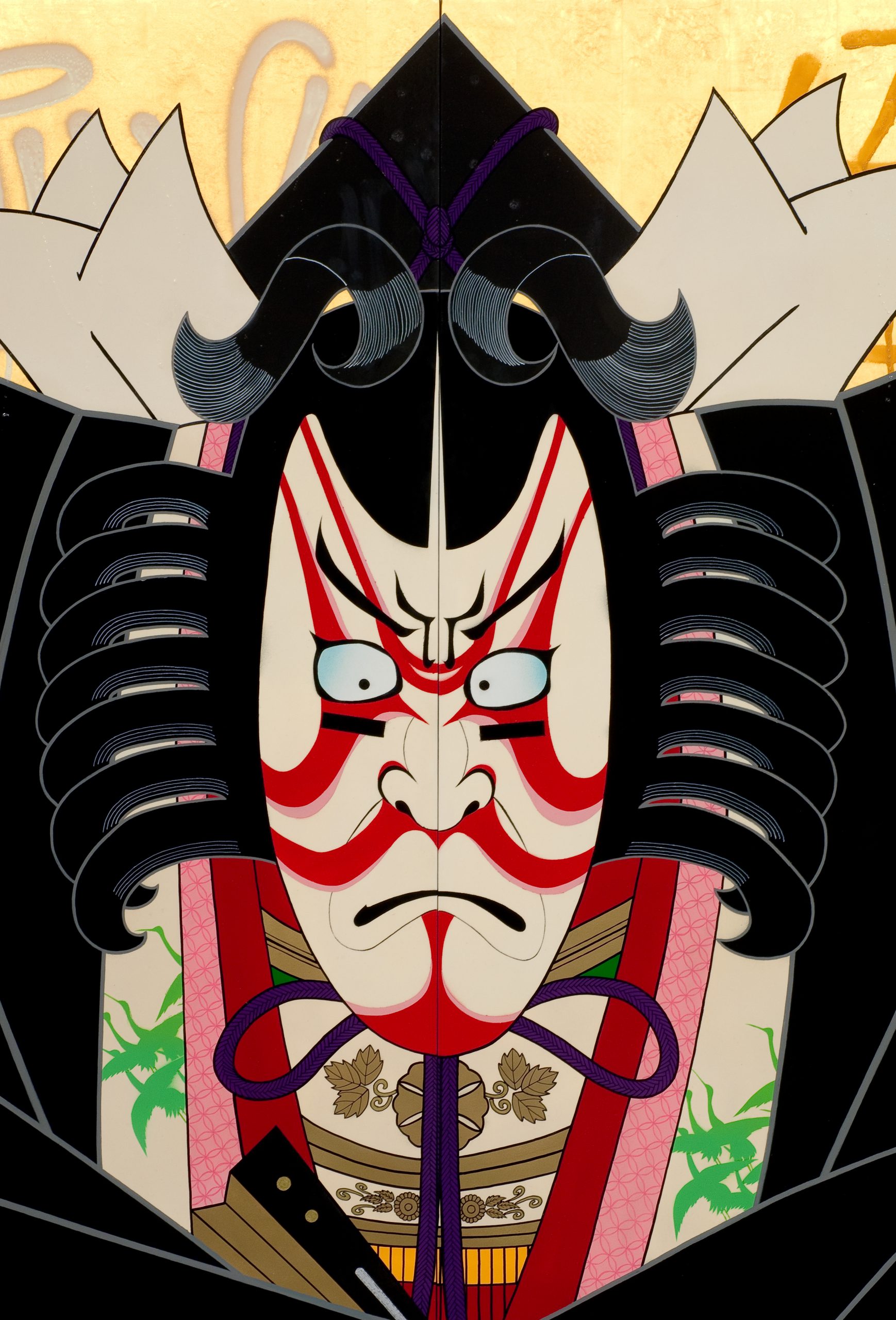
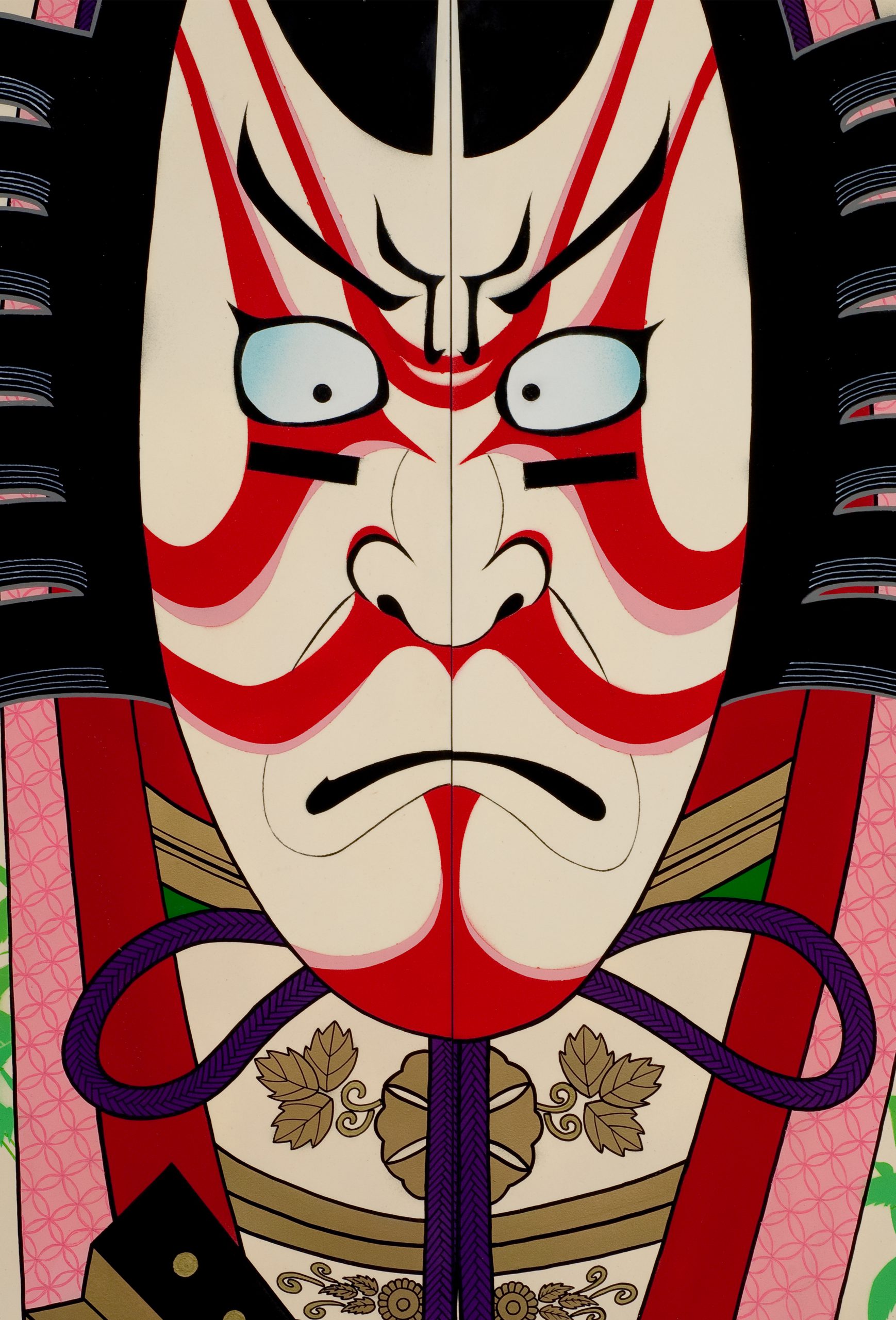
Gajin Fujita
The Saints (details), 2008
gold leaf, acrylic, spray paint, and paint marker on wood panel
72 x 108 in. (182.9 x 274.3 cm) - 6 panels
Inv# GF08-11
Each color is applied using a unique stencil that is held down during the painting process by strategically placed weights, creating rounded and triangular voids throughout the drawings' compositions. Many stencils come together to form each finished work on paper, the full power of which can be felt in large compositions such as these two samurai drawings, from Southland Standoff and Ghost Rider. The intricate nature of the process becomes apparent in the steely gaze and elaborate uniform of the warrior in black from the painting Southland Standoff. Each minute strand of hair, decorative tassel, and interlocking bit of padding has been carefully cut from the stencil, while details such as facial features have been left sketched in pencil. Electric lightning bolts frame the phantom samurai of Ghost Rider as he rides hell-for-leather into battle on his spectral mount. The ethereal nature of the drawings is especially appropriate here, as it reinforces the ghostly nature of this figure from Japanese myth.
Gajin Fujita
Study of The Saints, Face #2, 2008
spray paint and pencil on paper
23 x 27 in. (58.4 x 68.6 cm)
Private collection
Inquire
Legendary beasts also take form in the drawings. In a study from Fujita’s largest painting to date, Invincible Kings of this Mad Mad World, an impressive lion prowls toward the viewer, gaze fixed forward and mouth open in a perpetual growl. The commanding scale and presence of the work underline the subject’s status as king of the beasts, one who is often paired with the peony flower (king of the flowers) in Japanese tattooing. In another drawing, a scaly bearded dragon twists across the page, exposing its golden spine and articulated coral underbelly. This drawing also incorporates gold detailing, bringing Fujita's signature metallic look from the paintings into the work on paper.
Fujtia's drawings offer a glimpse into a more personal realm. Rather than the bold tags and fronts that appear in the paintings, the studies often bear notes and quips in pencil and ink. Among these are the calligraphic signature of HYDE (the artist’s alter ego) in the study for La Shadie, the playful description of “Raijin chuckin’ bolts” underneath the thunder god as he rides in on a cloud wielding crossed bolts of lightning, and the more enigmatic note beneath the writhing dragon in the study of Chasing the Dragon declaring: “this ain’t no ramen bowl.”
Sales inquiries: sales@lalouver.com
Press inquiries: press@lalouver.com
310.822.4955 info@lalouver.com
Hours: Mon - Fri, 10 - 6 Summer hours: Mon - Fri, 10 - 6 Hours: Tuesday - Saturday, 10am - 6pm


